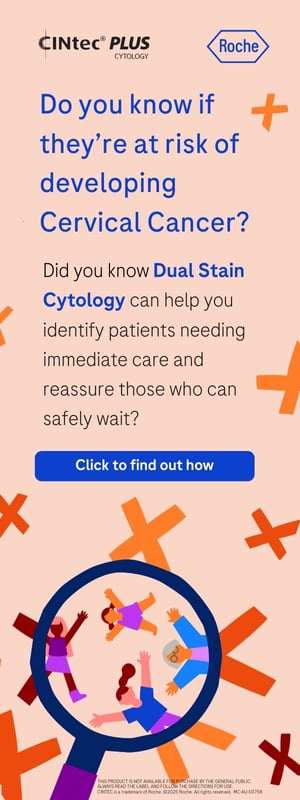I have a patient with a vulval rash, which I suspect is lichen sclerosus. How would you manage it now and into the future?
Lichen sclerosus (LS) is not rare in women over 50 and, if not treated, can result in devastating consequences. Unlike most other skin conditions, it can be complicated by severe scarring that may completely obliterate all vulval structure. Further, untreated, there is a 5% risk of squamous cell carcinoma involving affected skin. Both of these complications appear preventable with treatment.
The typical appearance is of a white plaque that may involve any part of the vulva, perineum and perianal skin and is usually, but not invariably, bilaterally symmetrical. The important differentiating feature is the white colour. Few other conditions produce this appearance. In addition, there may be purpura, fissures and erosions. There is typically hyperkeratosis and textural change.
Patients usually, but not always, have symptoms. These are variable, but itch is the commonest. Dyspareunia is often present; however, in the post-menopausal age group commonly affected, there may also be an element of atrophy contributing to this.
It is easy to underestimate the impact of this condition on a woman. Even though a small area of the skin, less than 1% of body surface area, is involved, the consequences of delayed diagnosis and inadequate treatment can be life-changing in terms of general wellbeing, self-esteem, body image and sexual function. The whole subject of vulval disease remains poorly recognised, diagnosed and treated. Patients often refrain from presenting early due to embarrassment and fear.
Because of the potential seriousness of LS, it is important to be sure of the diagnosis. The best way to confirm is with a biopsy prior to starting treatment. This can be done as an office procedure using a 2mm punch, taking the sample from the whitest area. Some patients find it traumatic, however, it is important to be sure and the test can be done in five minutes. Although some authors maintain that the diagnosis can be made clinically, there are other conditions that can mimic it (for example, lichen planus) and it can be hard for subsequent medical attendants caring for the patient to know how to proceed unless a diagnosis has been established.
Approximately 15% of patients have known thyroid disease or thyroid auto-antibodies, even in the presence of a normal TSH. Although it has never been proven that LS is an auto-immune disease itself, there is circumstantial evidence related to its association with other conditions that are.
LS should always be treated, even when asymptomatic. The gold standard treatment remains potent topical corticosteroid for virtually all cases unless the disease is very mild. Diprosone OV (betamethasone diproprionate 0.05% ointment in optimised vehicle) is a very reliable option in Australia. This is applied once or twice a day, depending on symptom severity. This is not a PBS item. Betamethasone diproprionate 0.05% ointment is a valid alternative. On the vulva, mometasone furoate has a tendency to sting.
It is very likely when you prescribe such a potent topical corticosteroid for the genital area that there will be resistance from your patient (after their own research online) and possibly the dispensing pharmacist. You must fully discuss this at the first consultation: it is very important to explain your treatment choice and reassure that it has been extensively researched and validated.
The first review should be at six weeks. If the skin is back to normal, corticosteroid potency may be reduced; however, until this outcome is achieved the potent preparation is continued. This can take up to six months of daily treatment on the potent preparation, particularly for severe disease. It is achievable in most patients, although there can be some residual hypopigmentation despite loss of other signs and symptoms.
In post-menopausal women, topical oestrogen, although not specifically effective for LS itself, is often helpful to reduce vaginal and vulval dryness. If this is not addressed, even in the presence of good LS control, patients may remain symptomatic and unable to experience pain-free intercourse.
Maintenance therapy is the rule for LS. Although there may be cases that remit, it is best to assume that treatment is for life. There is no single way to do this, however ongoing topical corticosteroid treatment with moderate to weak preparations (such as methylprednisolone aceponate 0.1% and hydrocortisone 1%) is required, titrated up and down to response so that control is maintained without side effects. Ointment is generally more effective than cream, and less likely to cause allergy, but is not acceptable to all because of the sticky feeling.
If applied at night, this is less of a problem.
Although lay people will express concerns about ‘thin skin’ this is not in fact the problem. However, erythema, telangiectasia and, in some cases irritation, occur if the treatment becomes too potent as the inflammation reduces. As long as there are no side effects, treatment continues and does not have to be reduced. In general, even with very long-term topical corticosteroid treatment of LS, there are no or minimal side effects.
In patients on long-term treatment, follow up is a key to compliance and adherence to corticosteroid of adequate potency. During the first two years, follow up should be at least six-monthly. In stable controlled disease, one to two year follow up is often all that is required.
Well controlled LS has an excellent prognosis and the course of the disease can be modified by treatment. Patients who have ongoing issues with symptoms or impact on quality of life should be assumed to have either a concurrent separate problem such as Candidiasis, or emotional issues. Accepting the reality of LS can be very challenging for some. However, with ongoing monitoring to ensure adequate treatment and strong reassurance to address emotional issues, most can become asymptomatic and never develop the long-term problems related to vulval scarring and malignancy. In my own experience, no patient on adequate suppressive treatment has developed a cancer, however, there is still not enough evidence to categorically assure that it can be completely prevented.
Further reading
Lee A, Bradford J, Fischer G. Long-term Management of Adult Vulvar Lichen Sclerosus: A Prospective Cohort Study of 507 Women. JAMA Dermetol. 2015;151(10):1061-7.






Leave a Reply